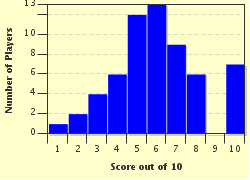Quiz Answer Key and Fun Facts
1. Which of the following presentations of the fetus during labor is the most common?
2. What is the term used for when the greatest diameter of the fetal head has passed through the brim of the pelvis?
3. Which of the following does not play a role in the descent of the fetus into the pelvis during labor?
4. What is the term used for the next step in the mechanism of labor after descent? The term is also used to denote bending of the elbow or the knee.
5. The movement of internal rotation is absolutely essential for completion of labor.
6. Which of the following movements is necessary for the birth of the head of the fetus?
7. As soon as the birth of the head is over, the neck untwists and the head returns to normal position in relation to the body. This is called what?
8. Which of the following occurs in quick succession to the untwisting of the fetal neck?
9. What is the last stage in the mechanism of labor?
10. If the fetus is in a transverse lie during uterine contractions, a cesarean section is indicated.
Source: Author
Saleo
This quiz was reviewed by FunTrivia editor
rossian before going online.
Any errors found in FunTrivia content are routinely corrected through our feedback system.


